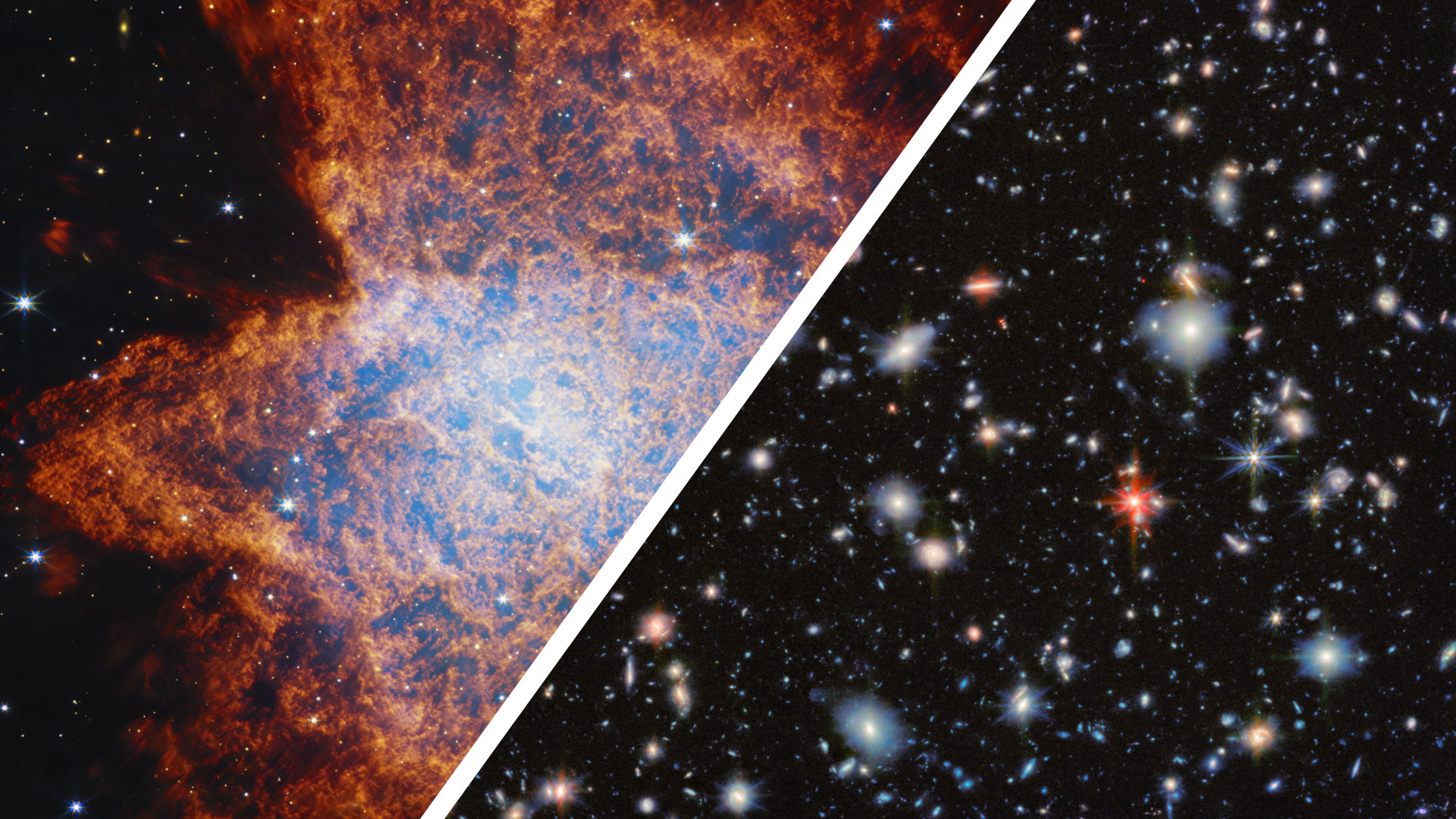The James Webb Space Telescope has made significant discoveries, revealing intricate structures within the planetary nebula known as NGC 6072, while providing new insights into early galaxies observed in the Hubble Ultra Deep Field. These observations are the result of a collaboration between NASA, the European Space Agency, and the Canadian Space Agency.
Located approximately 3,300 light-years from Earth in the southern constellation of Scorpius, NGC 6072 is the remnant of a star that has expelled its outer layers as it nears the end of its life. This expulsion creates a colorful nebula, and the recent observations made by Webb’s instruments provide a detailed look at this process.
New Discoveries in NGC 6072
Observations conducted on July 29, 2024, with Webb’s Mid-Infrared Instrument (MIRI) and Near-Infrared Camera (NIRCam) have unveiled previously hidden structures within NGC 6072. The nebula’s material is ejected by a dying star, leaving behind a white dwarf at its core. This core emits intense ultraviolet light, illuminating the surrounding gas and dust, creating the vibrant colors characteristic of planetary nebulae.
Webb’s images have captured multiple material flows radiating from the central star, suggesting potential interactions with a companion star. This finding aligns with a 2021 study that identified NGC 6072 as a candidate for a binary star system, based on data from the European Space Agency’s Gaia satellite. The concentric rings observed in the mid-infrared images may indicate that the companion star is in orbit around the dying star.
While the white dwarf is visible as a pinkish dot in the images, the companion star remains undetected but is considered likely based on the evidence collected thus far. Over time, the material from NGC 6072 will disperse into the interstellar medium, potentially contributing to the formation of new stars and planets.
Illuminating the Early Universe
In addition to studying NGC 6072, Webb has also focused on the Hubble Ultra Deep Field, an area of space previously explored by the Hubble Space Telescope. Webb’s recent observations of this region, known as the MIRI Deep Imaging Survey (MIDIS), aimed to capture faint signals from some of the universe’s oldest galaxies.
The Hubble Space Telescope’s original deep field image, taken in the mid-1990s, unveiled thousands of distant galaxies. Webb’s follow-up observations provide an enhanced view, revealing additional details and expanding our understanding of galaxy formation and evolution. The MIDIS team initially planned to conduct six visits to the field in December 2022, but faced technical challenges that delayed the final observation until December 6, 2023.
The combined observations from Webb total nearly 100 hours of exposure time, uncovering approximately 2,500 objects, primarily distant galaxies. Some of these may include artifacts from cosmic rays, but the findings contribute valuable insights into the timeline of the universe’s development.
The significance of these deep field studies lies in their potential to answer fundamental questions about the early universe. By examining the evolution of galaxies, astronomers aim to understand how the cosmos transitioned from a relatively featureless state to the complex structures we see today.
The findings from the MIDIS observations are expected to be published in a forthcoming paper by G. Östlin et al. in the journal Astronomy & Astrophysics on April 4, 2025. Continued observations and analyses will further enhance our knowledge of both the lifecycle of stars like our Sun and the formation of galaxies in the universe.































































